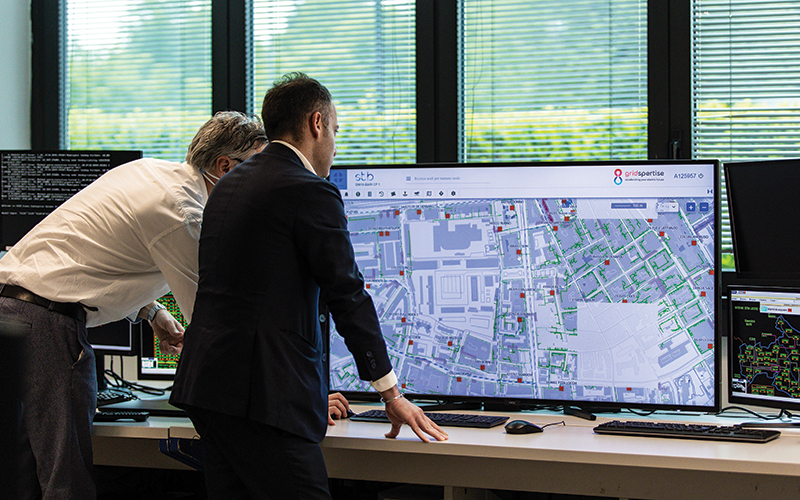Making power grids fit for the energy transition
As the world prepares its grids for the green electricity revolution, stakeholder and end user collaboration will be key, says Robert Denda, CEO of Enel-owned company Gridspertise

According to the US Energy Information Administration, world energy demand will increase by 50% by 2050. At the same time, the UN and most of its members have committed to achieving carbon neutrality by the same year. These factors, together with a growing awareness that climate change is having a major impact on the planet and our lives, mean that electricity production from renewable sources will have to increase. This will require an integrated strategy to modernise energy systems, starting with more flexible, reliable and resilient grids.
Time to overhaul the system
Our grids, most of which were designed more than 100 years ago, are not fully equipped to deal with the challenges that we are facing today. There are two possible solutions to take on these challenges: the first is to give the grids a physical overhaul, which is necessary but requires substantial financial investment and an even greater amount of time. The second solution, which is where our expertise comes in, involves transforming existing infrastructure by ‘adding intelligence’. In other words, through digitalisation and the use of smart meters, more information can be provided to consumers and, by the same token, to power grids operators (PGOs).
European distribution grids will need investments of €375-425bn by 2030
Grid modernisation as a global priority
Governments and organisations worldwide are already working on these solutions. In the case of the EU, a joint report by Eurelectric, Monitor Deloitte and E.DSO, based on data from 10 European countries, argues that European distribution grids will need investments of €375–425bn by the end of the decade.
Under the Obama administration, the US Department of Energy set up the Grid Modernization Initiative, and this year’s launch of the Building a Better Grid Initiative aims to catalyse the nationwide development of new and upgraded high-capacity electric transmission lines. These are essential to reaching US President Joe Biden’s goal of 100% clean electricity by 2035 and a zero-emissions economy by 2050.
Countries in South America, led by Brazil, Colombia and Chile, are expected to invest US$18.1bn in smart grid infrastructure over the next decade. Likewise, South Africa’s Smart Grid 2030 Vision was developed by the South African Smart Grid Initiative under the guidance of the Department of Energy and the South African National Energy Development Institute.
Major challenges for future grids
Future power grids and the utilities managing them will have to face and overcome key challenges related to electrification, integration and prosumerism, as well as digital automation.
Integration and prosumerism for sustainable electrification
The growth of electricity demand, intermittent renewable energy flows and new energy players will increase the complexity of the energy system.
Electric mobility will grow exponentially as both the EU and the US plan to end the sale of fossil-fuel-powered vehicles by 2035. There will also be a shift away from heating with fossil fuels to electric heat pumps.
At the same time, meeting the needs of aware, digital and active customers is becoming more challenging: ‘prosumers’ are emerging with rooftop solar installations, electric vehicles, and other distributed energy resources, such as home batteries.
Countries in South America, led by Brazil, Colombia and Chile, are expected to invest US$18.1bn in smart grid infrastructure by 2030
Distribution grids are the networks that connect all the stakeholders of our electric future, and PGOs are required to expand smart grid investments to improve grid resilience and facilitate the dispatching of distributed generation and fluctuating bidirectional flows. At the same time, they should compress reaction times to support network reconfiguration while improving overall operation and service performance for final users.
Digital automation for reliable electricity network
Throughout the years, automation and remote control systems, smart meters, and sensors connected to advanced communications infrastructures have significantly increased the efficiency and reliability of our electricity networks.
Today, the increase in distributed generation requires PGOs to extend remote control and automation from medium-voltage to low-voltage grids and increase intelligence at the edge.
This is why Gridspertise launched the QEd – Quantum Edge® device. Thanks to its decentralised computational capability and edge multi-purpose platform, this revolutionary all-in-one solution enables PGOs to run key grid functionalities directly on the edge and to virtualise key network automation functions through customisable applications.
A collaborative approach to unlock the electric future
To cope with the challenges of the energy transition and unlock the full potential of electric mobility and smart buildings, we need to move faster than ever before, and PGOs all over the world will have to transform power networks into smart grids.
Companies such as Gridspertise can provide solutions for the technology component to help grid operators deal with the load growth, deploying investments in legacy infrastructure in a cost-effective way and thereby keeping power delivery within quality and affordability parameters.
Preparing power distribution grids for the challenges ahead will require coordinated action between tech companies, power grid operators, policymakers, regulators and many other stakeholders, including electricity end users. Only through active collaboration with grid customers can we truly accelerate our electric future.
By Robert Denda, CEO, Gridspertise
Image credit | Gridspertise






Follow us
Advertise
Free e-Newsletter